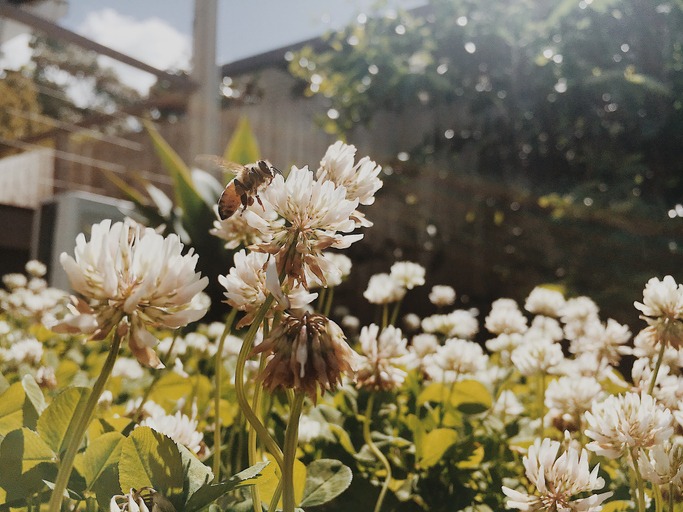Can you think of a feeling more satisfying than looking at a crop bed brimmed with the harvest or a garden full of flower blooms after a long season of working in the soil? We certainly can not. But not everyone gets to witness this majestic sight. For some, the garden always lacks volume in its harvest, no matter how much they spend on quality seeds and fertilizers. Are you facing the same problem? If yes, then worry not, for the solution might be easier than your think: it is probably buzzing around you.
Below, we will be discussing how you can reap various benefits and boost your garden’s potential by keeping bees around your plants. In addition to that, we will also be giving tips to help you make your garden more attractive for bees to inhabit.
Benefits Bees Bring to Your Garden
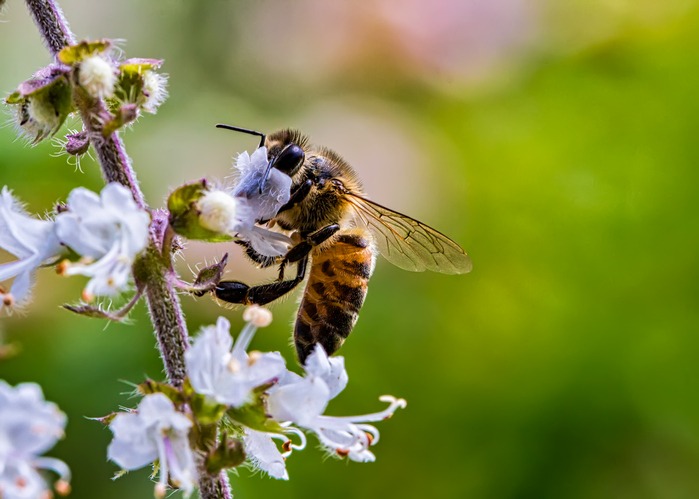
Anyone who has dirtied their hands in the soil while tending to plants or vegetables would know that the presence of bees can prove to be an absolute gamechanger in the success of any garden.
When out searching for food, bees are mainly looking for two things: nectar and pollen. Nectar is the sweet sugar flowers make, which is rich in sugars. It is the primary source of energy for bees, making it a vital part of their diet. Pollen is the granular stuff flowers need for reproduction. It provides all the fats and proteins bees need for a healthy balanced diet. When bees sit on a flower to get nectar from it, the sticky pollen grains stick to their body. When they move to another flower, they release the pollen grains from the previous flower – this process is called pollination.
Pollination is critical for all plants to reproduce, produce more seeds and keep new flowers and fruits coming. Therefore, bees are also imperative for the reproduction of plants, commercial crops, and native vegetation as they are nature’s best pollinators. In fact, one-third of all the food we consume – including apricots, zucchini, almonds, coriander, and more – depends directly on pollinating insects. So, a world without bees spreading pollen from one flower to another would have a catastrophic food shortage. The absence of bees as pollinators would not only have a devastating impact on global food production but also the economy. The worldwide economic value of bees’ pollination is estimated to be around $300 billion for a year.
In addition to reaping the benefits of cross-pollination and enjoying a lush harvest of ripe produce, you will receive the sweet rewards of homegrown beeswax and honey by keeping bees well-controlled in your garden.
Top Tips for Making your Garden a Bee-friendly Space
Are you wondering how can you attract more bees to your garden in an easy way? If yes, then keep reading. Below are some time-tested techniques that will encourage controlled colony growth and help boost your garden’s growing potential.
1. Grow Plants with Pollen and Nectar
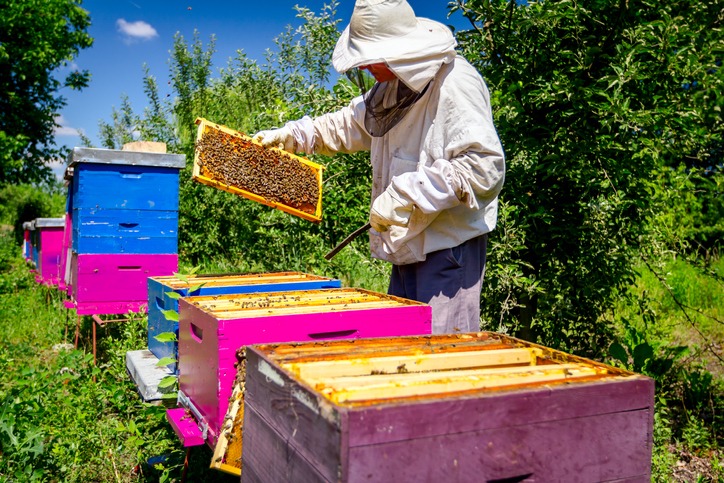
Bees rely heavily on nectar and pollen as their primary food sources, so nothing brings them out to the open like a tempting bed of flowers. When a colony of bees is out looking for a suitable spot to build their hive in, they pay a lot of attention to the availability of flowers and whether or not those flowers can offer enough nectar and pollen to fulfill the needs of a growing colony. Make sure to grow plenty of single flowers – most cultivars have extra parts that make the nectar and pollen inaccessible to many bees and other pollinators.
So if you are hoping for those furry insects to settle in your garden, you need to make some offerings they can snack on. Opt for flowers that are both pollen-rich and heavy producers nectar producers. These include,
- sunflowers
- goldenrod
- marigolds
- zinnias
- geraniums
- asters
Some common herbs that also prove highly tempting to a passing bee include oregano, rosemary, clover, and poppy. In addition to flowers and herbs, you can also plant bee-friendly flowering vegetables and fruits to bring benefits to your entire garden.
Bees eat all year long except when they retreat to their hives in the winter. Therefore, you need to make sure that your garden maintains a bee-friendly status all year round. To do so, you need to fill your garden with a wide range of flowering plants and herbs that can satiate the appetite of bees and other pollinators with their pollen and nectar throughout the entire growing season. You can choose perennial plants that offer fantastic sources of pollen and nectar throughout the year. Or you can also plant a range of flowering plants that bloom at different times throughout the year. This way, your garden will be appealing for bees with its nectar and pollen-laden flowers, no matter the time or season.
2. Grow Plants with Bee-friendly Colors
View this post on Instagram
Colors also play a crucial role in getting the approval of those furry friends and convincing them to settle in your garden. There are certain colors that bees find more attractive than others, such as violet, purple, blue, yellow, and white. Therefore, to enhance the aesthetic appeal of your garden and make it more inviting for bees and other pollinators, you need to grow plants with a variety of colored flowers.
Moreover, sow your bee-friendly plants in a grouping instead of spacing them out in different sections of the garden. Not only are bees more drawn towards clusters of flowers, but they also aggrandize the aesthetics of your garden.
While planting bee-friendly plants directly in the garden brings heaps of benefits, it can be tricky to do so for those with limited growing space. Therefore, some growers prefer growing such bee-friendly flowers in areas surrounding their garden. This way, you can attract bees from far and wide and support the natural ecosystem without having to compromise on your valuable growing space.
3. Grow Woolly Plants
One of the many ways to attract bees to your garden include growing some woolly plants. UK’s largest solitary bees are called wool carder bees. They are famous for getting their name from the practice of collecting hair from stems and leaves. They use these parts of the plant to build cells within their nests. There are several plants that you can grow in your garden to provide ‘wool’ to the bees. These include mullein (Verbascum) and lambs’ ears (Stachys) species.
4. Create Bee Hotels
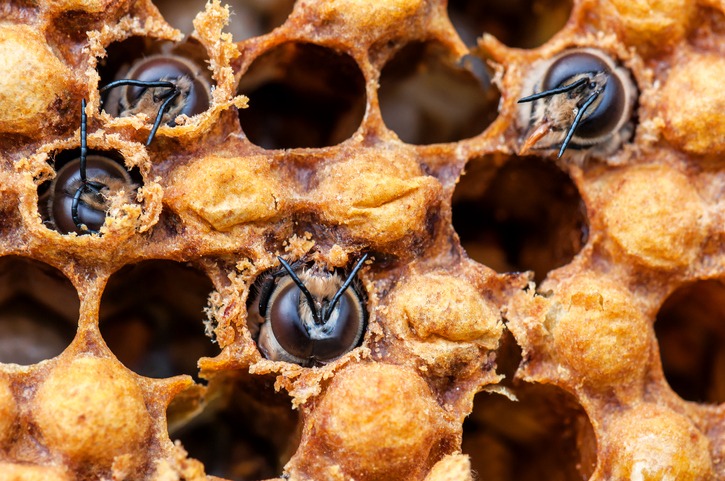
Another great way of boosting bee diversity in your garden is to create bee hotels. They will attract solitary species. In order to lay their eggs, solitary bees specifically look for hollow cavities. This way, they also leave a small supply of food for the larvae to eat. These larvae then hatch, pupate and emerge from the stems. Always make sure to position bee hotels in a place with maximum sunlight.
5. Make Bee Nests

During autumn and early winter days, Queen bumblebees seek out different places for hibernation. Most often, they do the deed in old vole and shrew holes. After some time, to seek a place for their nest, bumblebees start emerging in late winter and early spring. In order to provide a safe and cosy home for them to hibernate in, you can create a bumblebee pot or nest, using some easy-to-find materials.
6. Offer a Reliable Freshwater Source for Bees
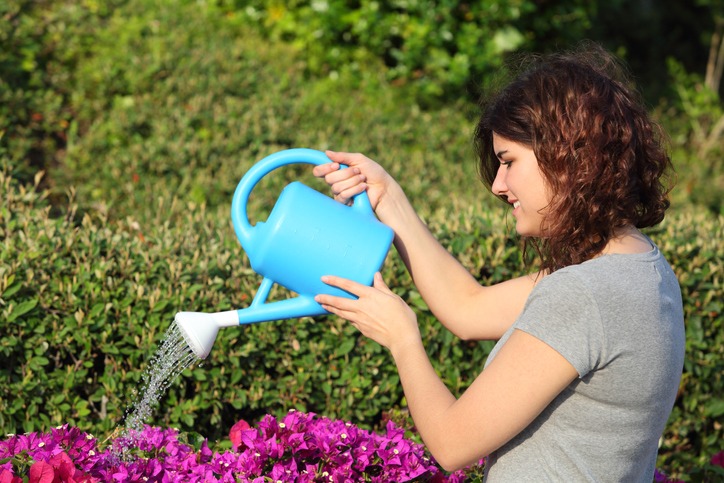
Like any other living being, bees, too, need a reliable fresh water supply to stay hydrated and keep their colony thriving. Therefore, to attract bees to your garden, you need to offer an easily accessible water source, where your furry pollinators can stop by for a quick sip of water while carrying out their daily pollen-transferring chores. If your garden is near a natural body of fresh water, you may already have your work cut for you. However, those living in hot/dry climates need to take additional steps to ensure their gardens are as appealing to bees as possible.
For instance, installing a small birdbath, fountain, or garden pond that can provide clean, fresh water ready for the taking will do the trick. Knowing that they will not have to remain thirsty on hot afternoons since a supply of fresh water is within their reach, a sense of security will enwrap bees, and they will happily settle in your garden without a second thought. However, make sure that you place small stones or some other flat object above the water level of your pond or fill the birdbath with gravel to provide a landing surface for the bees. This way, they will not drown in the water body while drinking. Also, place tree snags, dead plant stems, fallen logs, and clear patches of sandy soil for nesting purposes.
Native Plants for Bees
There are a number of plants that are good for bees. Have a look at this list of native plants (specifically across the U. S.) for bees, that wil definitely attract some swoon-worthy species of bees in your garden.
- Caltrop Kallstroemia
- Aster Aster
- Black-eyed Susan Rudbeckia
- Creosote bush Larrea
- Goldenrod Solidago
- Currant Ribes
- Elder Sambucus
- Huckleberry Vaccinium
- Joe-pye weed Eupatorium
- Oregon grape Berberis
- Wild buckwheat Eriogonum
- Wild-lilac Ceanothus
- Willow Salix
Provide Space for Bees to Build Their Home
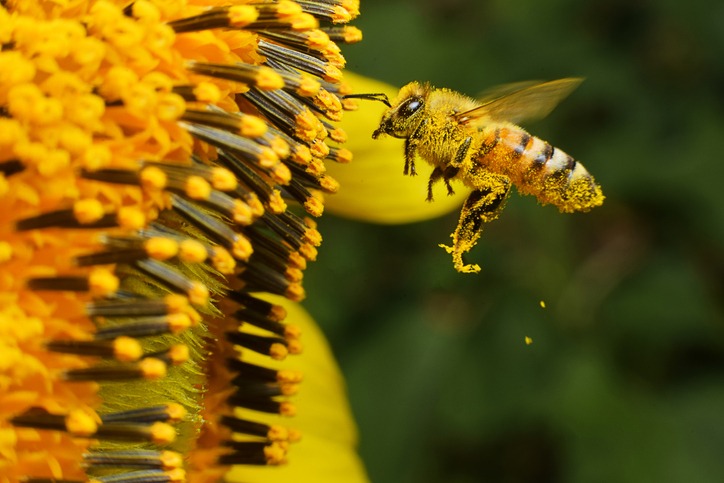
While most bee species live in hives, native bees form their colonies in the ground. So, when you are sowing your plants and herbs, remember to reserve some un-mulched areas in your garden to provide a space for native bees to make their home. Moreover, avoid using pesticides and herbicides at all costs. Instead, offer natural protection against pests by introducing good bugs and regularly weeding your garden by hand.
Some Final Bees
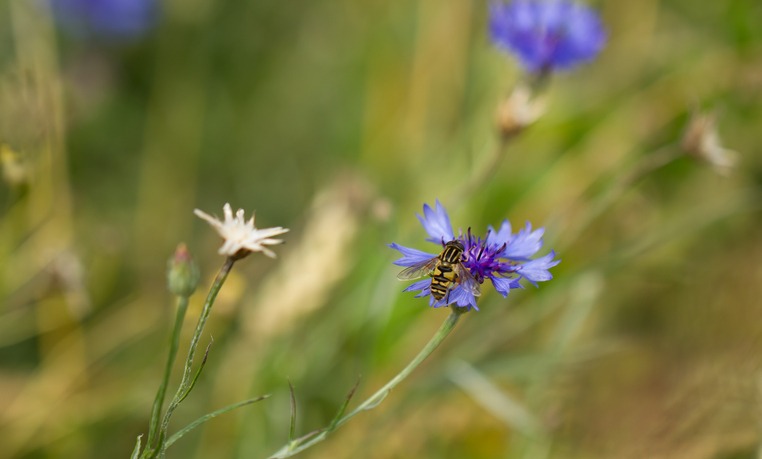
Thanks to their unique place in the ecosystem, bees play a key role in the pollination of nearly all the food we enjoy in our daily lives. Apart from being nature’s best pollinators, they are also excellent producers of honey. By making your garden a bee-friendly space, you will not only achieve the most bountiful harvests but also do your part in helping save the declining species of our furry friends.

